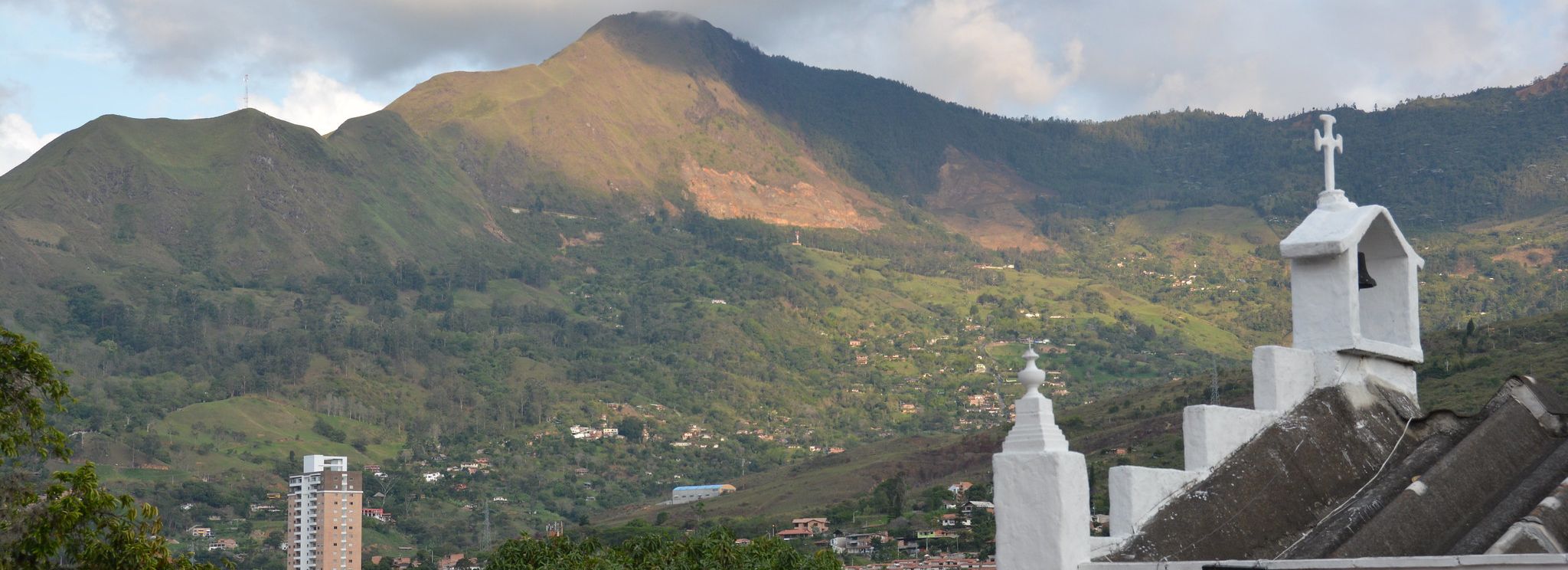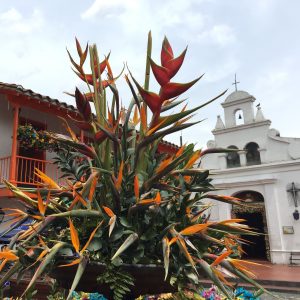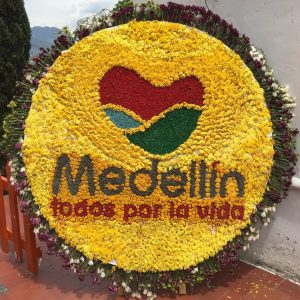The purpose of this document is to help you prepare for your group’s mission trip to Medellín (Medellin pronunciation – ‘Med-uh-jean’) Colombia with The Emiliani Project. It is designed to help you with the basics for all phases of your trip.
Medellín is a safe and beautiful city, but with all international travel, there are things you need to know to minimize the logistical challenges. This guide, along with The Emiliani Project staff, will help you do just that. We want your mission trip to be safe and easy so you can focus on doing the important stuff!

 The first thing you want to do after deciding to attend one of our Mission Trips is to make travel arrangements. Please make them as soon as possible – the earlier the better! You will be traveling to Medellin, Colombia – Jose Maria Cordoba International Airport (MDE) in Rionegro, which is 30 minutes outside the city of Medellin.
The first thing you want to do after deciding to attend one of our Mission Trips is to make travel arrangements. Please make them as soon as possible – the earlier the better! You will be traveling to Medellin, Colombia – Jose Maria Cordoba International Airport (MDE) in Rionegro, which is 30 minutes outside the city of Medellin.
The Emiliani Project will make transportation arrangements from the airport to our home. However, if you decide to come early or depart after the dates of the Mission Trip, you will need to make your own transportation arrangements. We will help coordinate a mutually convenient pick-up location for you to get you to our home.
The Emiliani Project does not work with or recommend a particular insurance carrier. However, if you are planning your mission trip well in advance of the travel dates, travel insurance is a good idea to minimize risk. Injury and illness can have an impact on your plans, and it’s nice to have a way to recover the money you spent on airfare, etc.
If someone in your group has special medical needs or is considered high-risk in some way, there are travel insurance companies that offer special medical policies for travel abroad. Please check with your insurance company and your doctor to review your circumstances and requirements.
Whenever traveling abroad, including travel to Medellin Colombia, you should ensure you are current on common immunizations. It is important that you consult with your doctor well in advance of the mission trip to ensure you have all recommended immunizations for Colombia and/or South America. Some immunizations require multiple doctor visits over time. These immunizations are precautionary but recommended by many doctors.
For the latest U.S. Center for Disease Control (CDC) travel advisories on travel to Colombia, please visit their CDC Colombia page.
For the latest U.S. Department of State’s advisories on travel to Colombia, please visit their Colombia Travel page.
U.S. citizens do not require a Visa in advance of a visit to Colombia. You will obtain a Visa when you arrive in the form of a stamp in your passport. There are a few things you should know about your arrival in Colombia that will make your entry smooth and easy:
Once you are at the airport in Medellín, you will go to Immigration (Immigracion). The Immigration Clerk will ask the purpose of your visit and where you are staying. Answer “tourism” and the address provided by The Emiliani Project staff. If you say those things, and say them in English, you will be waved through. If you say you are on business you may be there for a long time, as they will likely flag you to customs for inspection in the event you are entering with commercial items. The Immigration Clerk will provide you with a Visa stamp in your passport, good for 30 days. This is sufficient for your mission stay. However, know that a U.S. citizen can obtain a tourist visa for up to 60 days, free of charge, if you ask.
Address
Carrera 89A No 27-25
Medellin, CO
Once past Immigration, you will enter the baggage (equipaje) area. Retrieve your bag and then have your baggage receipt and passport ready for customs. You will most likely be sent to have your luggage passed through the x-ray machine and cleared through customs.

The country of Colombia is very large – almost three times as big as California and twice as big as Texas.
The country is broken up into Departments (like states in our country), then further into municipalities. Large municipalities are referred to as cities (ciudades). There are few “ciudades” in Colombia which includes Medellín. The smaller municipalities are referred to as towns (pueblos).
The city of Medellín, and the town of Caldas are both located in the Department of Antioquia – which extends from the mountains to the Caribbean coast. The people from Antioquia, (called ‘Paisas’), are among the politest people in the world. Try to be EXTRA POLITE in all your interactions with Colombians. It will pay big dividends.
What language do they speak in Colombia?
While there are a total of over 60 languages spoken, over 99% of the people speak Spanish.
The expressions “Muchas gracias”, “Por Favor” and “Perdón” go a long way here to demonstrate to the Colombians that you are not just another ¨Grosero Gringo¨ (i.e., ¨Rude North American¨). Speaking of which, the term “Gringo” is commonly used in Colombia to refer to North Americans. It is not considered disparaging, so don’t be offended if someone refers to you as one.
Cell phones. If you want to use a U.S. cell phone, be sure to check with your carrier before leaving. They all offer international voice and data plans. However, WiFi is available at our home so FaceTime, WhatsApp, Signal, etc. will be available for use.
Time Zone. What time is it in Medellin Colombia now? The time in Colombia is the same as New York City (EST) during standard time. However, during daylight savings time, Colombia is in the same time zone as Chicago (CST). Standard time begins on November 2, 2025, through March 8, 2026. Colombia has not been on daylight saving time since 1993.
Credit/ATM cards. All major credit cards are accepted in Medellín (Mastercard, Visa, Amex). However, you may need to place a travel notification with your credit card company before you leave, or your card will be denied and locked. The same is true with ATM/Debit cards. There are plenty of cash machines and major banks in Medellín, which includes Bancolombia (Wells Fargo affiliate) and Citibank. If you notify your bank before you leave, you should have no problem getting cash. Please note that you will not need cash while at our home.
Currency/exchange. The ONLY currency in Colombia is the Colombian Peso (COP). This is a cash-based society, and no one will accept U.S. Dollars (USD). The best rate of exchange can be found in Colombia. Keep in mind, too, that you will receive an excellent exchange rate through an ATM machine.
Clothing. Colombia has the highest amount of rainfall per year than any other country! There are two seasons in Colombia: the rainy season and the not-so rainy season. However, the climate in Medellín is temperate all year. You can expect temperatures during the day of 70-80 degrees and 60-70 degrees at night. In Caldas, where our home is, it is cooler than in the city and tends to rain every day. We recommend pants/jeans and shoes. You will NEED a rain jacket and shoes you don’t care to ruin!
Medical/Dental Emergencies. Colombia has excellent health care, and there are ample emergency clinics and hospitals around to handle any scenario. If you have any questions about your insurance or any special health conditions, please alert our staff so that we can help identify the nearest and best facility to meet your needs. Please consult with your doctor before you leave.
Security/Safety. Our home is in a rural part of Medellin called Caldas and is generally a 45 minute drive from Medellin. For your safety, we have security guards on the premises 24/7 during all Mission Trips. Also, security cameras are located throughout the property and are monitored by a local security company. Your safety is our priority.
Electricity/Internet. 110v with wall jacks identical to the U.S. You won’t need inverters or adapters of any kind.
Food. Meals during your stay are planned out by our staff. We will offer a wide variety of delicious meals while you are with us! Please notify us in advance if you have any food allergies or special dietary needs.
Leaving Colombia. When leaving Colombia, it is a little different from when you entered. If you can check-in online, then do it because it will save a great deal of time. The Medellín airport is small and normally a VERY busy place. Give yourself ample time to get through the process. We recommend arriving at the airport at least 3 hours before your flight. Most of the time you will do a lot of waiting, but if you miss your flight, it can be very difficult to find other options.
Airport Security. After you get your boarding pass at the airline counter, proceed directly to the security checkpoint. Entry is to the far left as you enter the airport. They will examine your passport and boarding pass, then direct you to the queue for security screening. When you reach the security officer at the X-Ray belt, he/she will begin engaging you regarding the contents of your bags and your visit. Be prepared to answer questions about your stay and your destination. After you leave security, you will enter another queue for Immigration. This process is normally very easy and quick. They will stamp your passport, and you can proceed to your gate.
Luggage lock. Security with checked luggage is a problem in Colombia. If you are checking bags, use a TSA-approved luggage lock on all bags.
Copy of your passport. A photocopy of your passport can serve as identification and is a good idea to have in the event you lose your passport, as you will need identification to provide to TSA.
Raincoat. Yes, it rains a lot in Colombia. It is wise to be prepared!
Bug Spray – it’s a good idea to bring some Deep Woods Off or its equivalent.
Throw-away Shoes – bring some shoes you don’t mind getting rid of at the end of the trip.
Sunglasses – it’s sunny most of the time, so sunglasses are a must.
Sunscreen – it’s beautiful, but we are at 7,500 feet so it’s easy to get a sunburn.